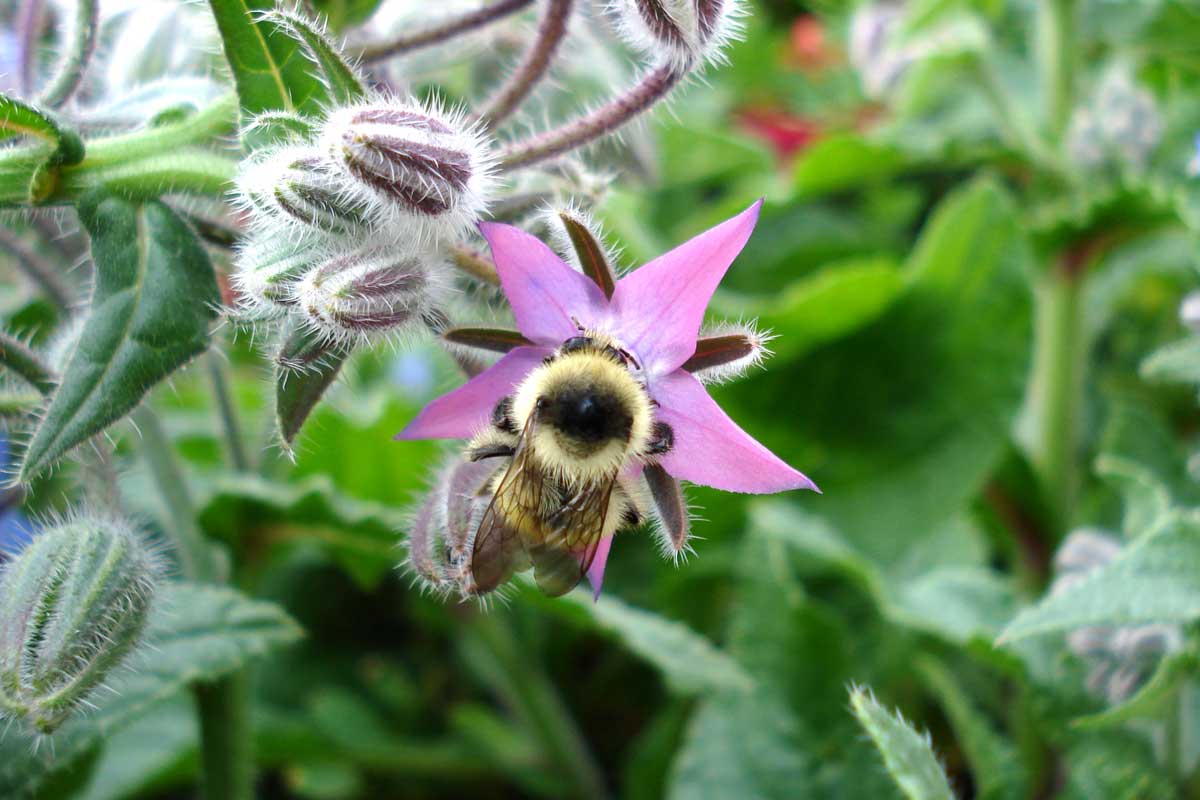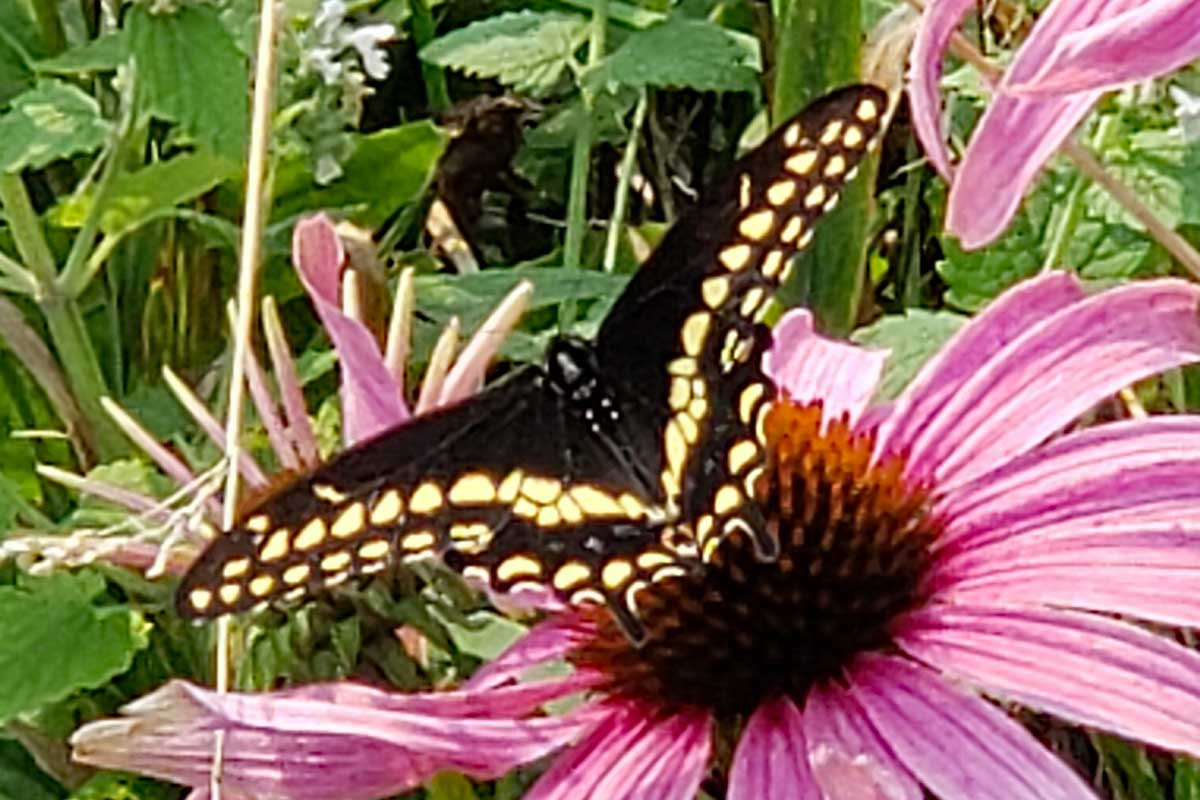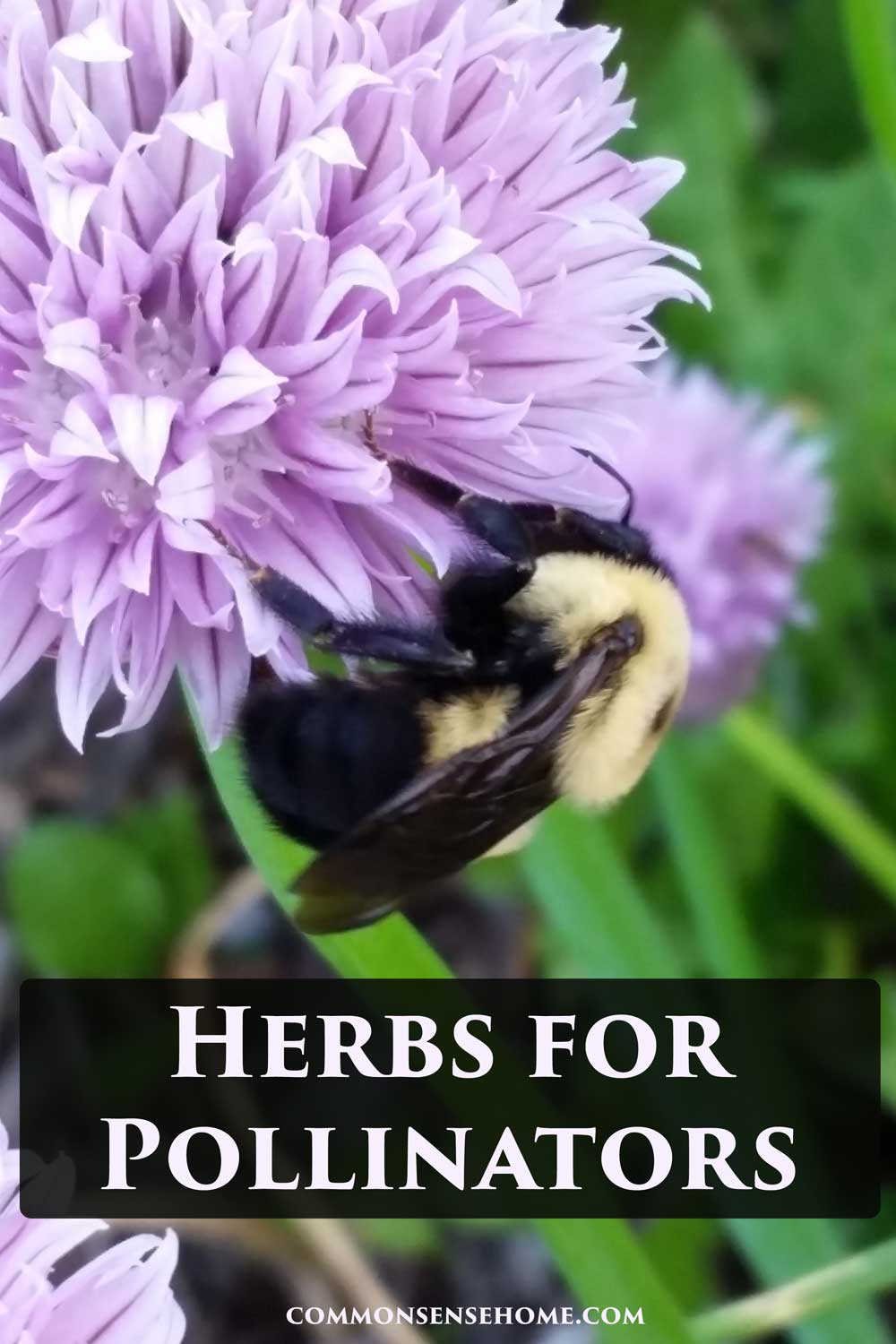Herbs for Pollinators (and You)
This post may contain affiliate links. Read my full disclosure here.
Our free guide, Herbs for Pollinators, is designed to help you create a thriving, pollinator-friendly garden using easy-to-grow herbs.

Whether you’re looking to boost biodiversity, support bees, butterflies, or hummingbirds, or simply enjoy the beauty of nature, this guide provides everything you need to know about the best herbs to plant. Download it today and start making a positive impact on your local ecosystem!
This guide also includes an introduction on how to use these herbs in your home apothecary.
Herbs for Pollinators Included in this Guide
If a plant herbs that flower, odds are there is some pollinator that will visit. I’m sharing some of my favorite medicinal and culinary herbs that are extremely easy to grow, including:
- Goldenrod (Solidago spieces)
- Mint (Mentha spp.)
- Echinacea (Echinacea purpurea) AKA coneflower
- Borage (Borago officinalis)
- Yarrow (Achillea millefolium)
- Sage (Salvia officinalis)
- Anise Hyssop (Agastache foeniculum)
- Catnip (Nepeta cataria)
- Oregano (Origanum vulgare)
These nectar rich species are great for attracting pollinators to your herb garden.

Pollinator Tips
Here are some simple tips to attract pollinators to your garden.
Plant Native Flowers
Native plants are best suited to your local environment and are often preferred by local pollinators. Choose a variety of flowers that bloom at different times to provide food throughout the growing season.
Choose a Variety of Flower Shapes and Sizes
Different pollinators are attracted to different flower types. For example, bees prefer open, easily accessible flowers, while butterflies like flat-topped blooms. Plant a mix to attract a range of pollinators.
Avoid Pesticides
Pesticides can harm pollinators, even if they’re used on non-flowering plants. Opt for organic methods of pest control or encourage beneficial insects like ladybugs and lacewings to manage pests naturally.
Would you like to save this?
Provide Water Sources
Pollinators need water to stay hydrated. Set up shallow dishes or birdbaths with small rocks for insects to land on, or create a “pollinator puddling” area where they can drink safely.
Plant in Clusters
Grouping flowers of the same species together in clusters makes it easier for pollinators to find them. A large patch of blooms is more attractive and accessible than scattered individual plants.
Include Host Plants
Some pollinators, like butterflies, need specific plants to lay their eggs on. Adding host plants (e.g., milkweed for monarchs) helps support the entire life cycle of certain species.
Incorporate Herbs & Flowers
Many herbs, such as lavender, thyme, and anise hyssop, are great for attracting bees, butterflies, and other pollinators. Plus, they’re easy to grow and serve multiple purposes in your garden. Lemon balm and bee balm are popular with a wide variety of pollinators due to their bright, tubular flowers.
Create Shelter
Pollinators need places to rest and hide from predators. Leave some undisturbed areas in your garden, such as logs, leaf piles, or tall grasses, to provide shelter and nesting sites.
Use Color to Your Advantage
Pollinators are drawn to specific colors. Bees love blue, purple, and yellow flowers, while butterflies prefer bright colors like red, orange, and pink.
Let Some Plants Go to Seed
Allowing certain plants like dill, parsley, or fennel to flower and go to seed provides additional food sources for pollinators and encourages them to keep visiting your garden.
By following these simple tips, you can create a pollinator-friendly garden that supports biodiversity while adding beauty and vibrancy to your outdoor space.


